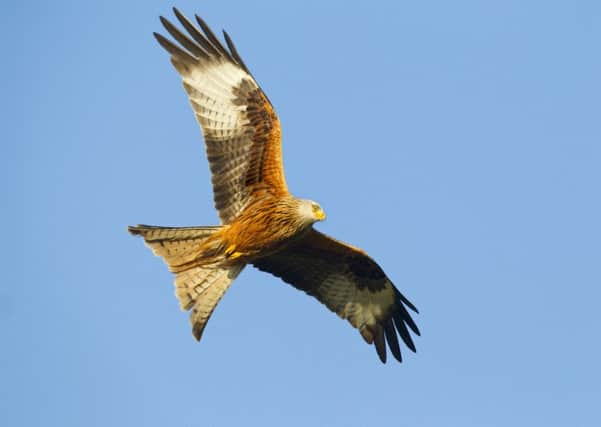Keep an eye out for Red Kites - RSPB appeal


Red kites are magnificent birds of prey which were sadly persecuted to extinction more than 200 years ago because people mistakenly saw them as a threat to livestock.
However, back in 2008 the conservation charity joined forced with the Welsh Kite Trust and the Golden Eagle Trust to reintroduce the species to Northern Ireland’s skies.
Advertisement
Hide AdAdvertisement
Hide AdOver two years, dozens of young red kites were released into County Down and every year since 2010 these re-located kites have produced their own chicks.


Unfortunately, the project hasn’t been without its setbacks, with a number of birds dying from natural causes or as a result of poisoning.
The current population is thought to stand at around 14 breeding pairs and, although no further releases are planned, it’s vital the charity continues to monitor the population until its’ at a sustainable level - estimated to be around 50 pairs.
With a dedicated team of 12 volunteers, RSPB NI is carrying out detailed on-the-ground monitoring but the more pairs of eyes searching the skies the better!
Advertisement
Hide AdAdvertisement
Hide AdWhile County Down remains a hot-spot, red kites have been seen all over Northern Ireland as far away as Fermanagh.
Claire Barnett from RSPB NI said: “People will be able to easily identify red kites with their rusty-red colouring, forked tail, white patches under each wing and inky black wing tips, not to mention their five-and-a-half-feet wingspan!
“While they are the largest bird of prey to nest in Northern Ireland, kites are opportunistic scavengers, feeding mostly on worms and small dead animals and aren’t a threat to livestock or people.”
To report a sighting, please email [email protected] Sightings where wing tags are read are most helpful but even sightings of untagged kites, or where the tags could not be read, are also extremely useful.